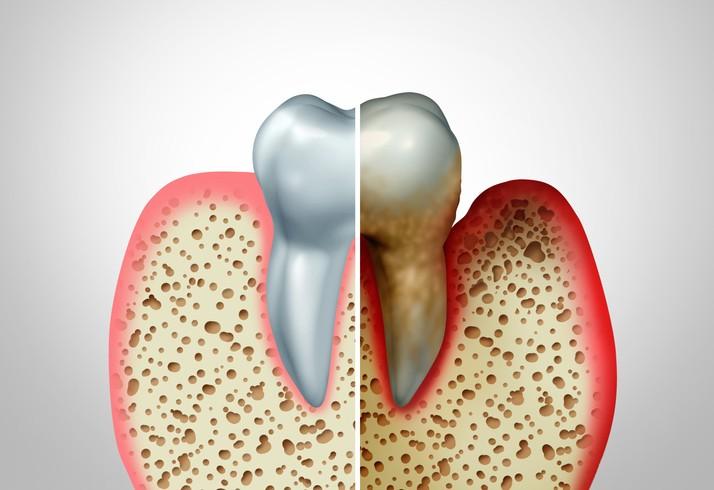A new study “demonstrated that CBD attenuates ligature-induced periodontitis”.

A comparison between a health tooth (left), and a tooth with periodontitis (right).
Titled Cannabidiol attenuates periodontal inflammation through inhibiting TLR4/NF-κB pathway, the study was published in the peer-reviewed Journal of Periodontal Research. It was conducted by researchers at Sichuan University and Yunnan Hempson Bio-Tech Co., both in China.
“Periodontitis is a chronic inflammatory disease involving soft and hard tissue destruction in the periodontal region”, states the study’s abstract. “Cannabidiol (CBD) is a natural compound isolated from cannabis, which has the effect of inhibiting inflammation. However, the role of CBD in periodontitis remains unclear.”
The aim of this study “was to investigate the anti-inflammatory effects and osteoprotective actions of CBD in periodontitis and its molecular mechanisms.”
After establishing the rat periodontitis model by ligatures, the specimens were processed for morphometric analysis by Micro-CT. The gingival tissues were collected, and the levels of TNF-α, IL-1β, and TLR4 were measured by enzyme-linked immunosorbent assay.
“LPS was used to induce the inflammatory response of human periodontal ligament cells (hPDLCs) in vitro”, states the study. “QPCR and western blot were carried out to detect the expression of related inflammatory cytokines and signaling pathways.”
Researchers found that “cannabidiol significantly inhibits bone loss in experimental rat periodontitis models.”
They continue: “CBD downregulated the pro-inflammatory mediator TNF-α, related to the decrease of TLR4 protein expression. Overexpression of TNF-α and TLR4 caused by LPS in hPDLCs. CBD inactivated the TLR4/NF-κB signaling pathway by inhibiting TLR-4 expression and p65 NF-κB phosphorylation. CBD can be considered as a therapeutic agent for periodontitis.”
Researchers conclude:
Our study demonstrated that CBD attenuates ligature-induced periodontitis in rats and LPS-induced inflammation in hPDLCs by inhibiting TLR4/NF-κB pathway activation. It indicates that topical CBD application is effective in treating periodontitis.







